#agents of Wu xing
Text
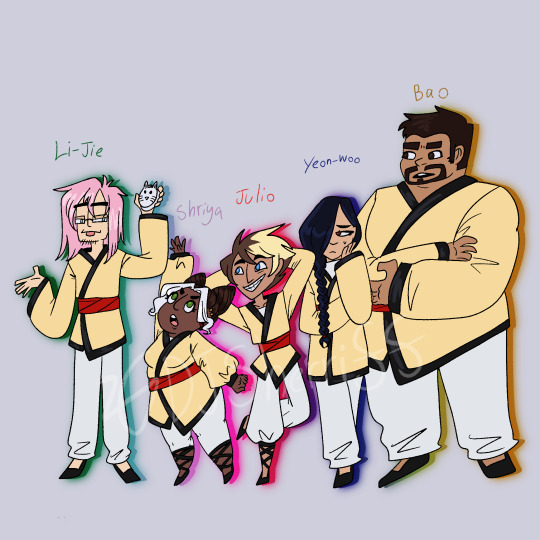

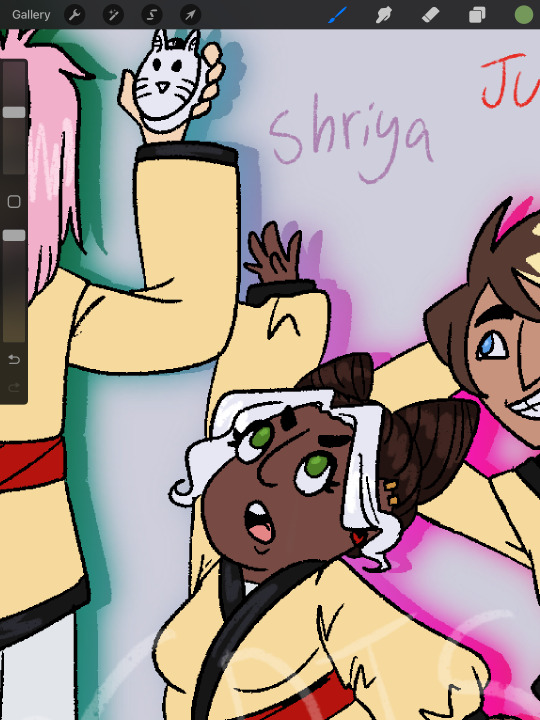



Haven’t drawn these losers in a while
#artists on tumblr#character design#original characters#agents of Wu xing#Kung fu#digital art#procreate#ocs
8 notes
·
View notes
Text
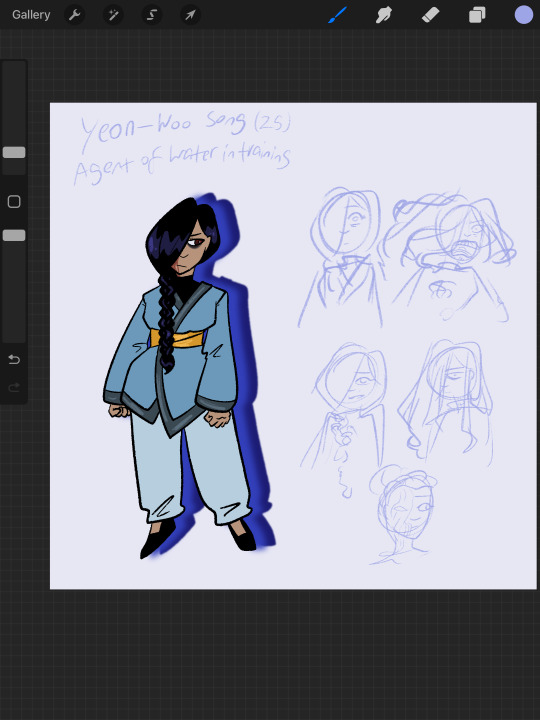
My oc Yeon-woo, she’s both the most badass and the most sobbing wet cat of my ocs
4 notes
·
View notes
Text
Project igi save games

PROJECT IGI SAVE GAMES FULL VERSION
PROJECT IGI SAVE GAMES DRIVER
PROJECT IGI SAVE GAMES DOWNLOAD
Multiple paths exist for every mission, with the most obvious and daunting being a noisy gun-fight, because in every mission Jones is outnumbered anywhere from 20-1 upto 50-1. Straight-forward tactics are not encouraged, with stealthy and covert movement giving the player a better rating, rank and chance of survival, with the highest attainable ranking entitled David Jones. Missions have objectives that must all be completed before the mission ends. This approach is similar to other games in this genre, which don't rely on video, instead providing a comparable quality of visual and dramatic appeal, reusing the same in-game 3D engine for cut scene rendering. The game is divided into missions, and the story is presented in cut scenes, shown before and after every mission, with animated characters rendered in real-time and pre-recorded speech. The game was generally not well received by critics. Probably because of this the game was banned in China, because it "intentionally blackened China and the Chinese army's image". At the end of the game, the protagonist David Jones is finally able to defeat him and stop the launch. Xing orchestrates various events (such as armed robbery of advanced prototype technology from the Russian mafia) in order to get Electromagnetic pulse (EMP) weaponry on a space rocket that he has launch control over. The game's plot features a rogue Chinese General, "Wu Xing" as the primary antagonist. The box art is similar to the poster for GoldenEye. Chris Ryan, a former Special Air Service operative best known for being the lone successful escapee of Bravo Two Zero, served as a consultant to the game. The original, published by Eidos Interactive, offered only single-player play with no save game feature. It is the sequel to Innerloop's Project I.G.I.: I'm Going In. The game is a stealth-based first person shooter. Right Click on the IGI.I.G.I.-2: Covert Strike is a computer game developed by Innerloop Studios and released by Codemasters in 2003.After extracting open the extracted folder.
PROJECT IGI SAVE GAMES DRIVER
Sure you graphics driver is installed properly.
How To Install/Download Project IGI Download? Minimum Requirements Of IGI 1 Game freeload: Plenty of hard work and practice defined him as one of the most extremely rated NCOs in the parachuting army. After spending a short period in a child detention center, he quickly joined the British Army. David is also defined as an officer who does not give up so quickly at emergency situations and risky but reaches firm to face and solve the situation calmly. He has a special ability to perform complicated tasks. David Llewellyn Jones is the best covert operative under the command of Project IGI Game Highly.
PROJECT IGI SAVE GAMES DOWNLOAD
The primary or the great charter in IGI Game Download Game is DAVID Llewellyn was an agent for the IGI 1 and former British operator. You can also view or hear the footsteps of the enemy as well Satellite shows you. The player also gets help from the map which helps to complete their objectives. IGI 1 is a huge bundle of the tactics, Planning, and operator. Project IGI is one of the most fantastic game for the computer.
PROJECT IGI SAVE GAMES FULL VERSION
Project IGI 1 Download Game Full Version is one of the best first person shooter game which is created by Inner Loop Studios and published on December 15, 2000, Eidos Interactive.

0 notes
Text
TOP 5 TV DRAMA EACH YEAR WITH THE HIGHEST BAIDU INDEX RANKING
(from 2011 to 2021/known internationally)
🔥2011:
No.1: Scarlet Heart (Bu Bu Jing Xin)
No.2: The Temptation To Go Home (Hui Jia De You Huo)
No.3: The Lock Heart Jade (Gong Suo Xin Yu)
No.4: The Glamorous Imperial Concubine (Qing Shi Huang Fei)
No.5: Palace (Gong)
🔥2012:
No.1: iPartment season 3 (Ai Qing Gong Yu)
No.2: The Magic Blade (Tian Ya Ming Yue Dao)
No.3: Locked Beaded Curtain (Gong Suo Zhu Lian)
No.4: Empresses Of The Palace (Hou Gong Zhen Huan Zhuan)
No.5: Xuan-Yuan Sword: Scar Of Sky (Xuan Yuan Jian Zhi Tian Zhi Hen)
🔥2013:
No.1: Little Daddy (Xiao Ba Ba)
No.2: We Get Married (Zan Men Jie Hun Ba)
No.3: Prince Of Lan Ling (Lan Ling Wang)
No.4: Swordsman (Jin Xiao Ao Jiang Hu)
No.5: Legend Of Lu Zhen (Lu Zhen Chuan Qi)
🔥2014:
No.1: iPartment season 4 (Ai Qing Gong Yu)
No.2: My Love From The Star (Byeoreseo On Geudae)*
No.3: Swords Of Legends (Gu Jian Qi Tan)
No.4: Boss & Me (Shan Shan Lai Le)
No.5: The Empress Of China (Wu Meiniang Chuan Qi)
🔥2015:
No.1: The Legend Of Mi Yue (Mi Yue Zhuan)
No.2: My Sunshine (He Yi Sheng Xiao Mo)
No.3: The Journey Of Flower (Hua Qian Gu)
No.4: The Lost Tomb (Dao Mu Bi Ji)
No.5: Nirvana In Fire (Lang Ya Bang)
🔥2016:
No.1: Ode To Joy (Huan Le Song)
No.2: Love O2O (Wei Wei Yi Xiao Hen Qing Cheng)
No.3: The Princess Weiyoung (Jin Xiu Wei Yang)
No.4: Go Princess Go (Tai Zi Fei Sheng Zhi Ji)
No.5: Descendants Of The Sun (Taeyang-ui Huye)*
🔥2017:
No.1: In The Name Of The People (Ren Min De Ming Yi)
No.2: The First Half Of My Life (Wo De Qian Ban Sheng)
No.3: Eternal Love (San Sheng San Shi Shi Li Tao Hua)
No.4: Princess Agents (Chu Qian Zhuan)
No.5: Ode To Joy season 2 (Huan Le Song)
🔥2018:
No.1: Story Of Yanxi Palace (Yan Xi Gong Lue)
No.2: The Story Of Minglan (Zhi Fou? Zhi Fou? Ying Shi Luo Fei Hong Shou)
No.3: Ashes Of Love (Xiang Mi Chen Chen Jin Ru Shuang)
No.4: Legend Of Fuyao (Fuyao)
No.5: Ruyi’s Royal Love In The Palace (Ruyi Zhuan)
🔥2019:
No.1: Joy Of Life (Qing Yu Nian)
No.2: Go Go Squid! (Qin Ai De, Re Ai De)
No.3: Hope All Is Well With Us (Wo Men Dou Yao Hao Hao De)
No.4: The King’s Avatar (Quan Zhi Gao Shou)
No.5: The Untamed (Chen Qing Ling)
🔥2020:
No.1: The Bad Kids (Yin Mi De Jiao Luo)
No.2: Nothing But Thirty (San Shi Er Yi)
No.3: Go Ahead (Yi Jia Ren Zhi Ming)
No.4: Find Yourself (Xia Yi Zhan Shi Xing Fu)
No.5: I Will Find You A Better Home (An Jia)
🔥2021:
No.1: Crime Crackdown (Sao Hei Feng Bao)
No.2: My Heroic Husband (Zhui Xu)
No.3: You Are My Glory (Ni Shi Wo De Rong Yao)
No.4: Word Of Honor (Shan He Ling)
No.5: Rattan (Si Teng)
(*) Korean dramas. I have no idea why there are two of them on this Chinese dramas list but okay, they are still accepted here.
The list in picture form: (You can see the Baidu index of the dramas here - click in to see better)

---
So, what do you think of this ranking? How many of these dramas do you know of/have you watched? Which is your favourite?
(The tags can not cover every drama. So I have tried my best to pick out some I think would be more well-known among international fans.)
#the untamed#word of honor#cdrama#chinese drama#scarlet heart#the lock heart jade#empresses of the palace#swordsman#legend of lu zhen#swords of legends#boss & me#the empress of china#my sunshine#the journey of flower#the lost tomb#nirvana in fire#love o2o#eternal love#princess agents#story of yanxi palace#the story of minglan#ashes of love#legend of fuyao#ruyi's royal love in the palace#joy of life#go go squid#go ahead#crime crackdown#you are my glory#rattan
102 notes
·
View notes
Text
All the Chinese Dramas/Movies I’ve Watched or Started (85 Listed Here)
Painted Skin 1 (Hua Pi 1) (movie)
Painted Skin 2 (Hua Pi 2) (movie)
She Diao Ying Xiong Zhuan 2008 (Legend of the Condor Heroes)
Shen Diao Xia Lv 2006 (Return of the Condor Heroes)
Xiao Ao Jiang Hu 2013 (The Smiling, Proud Wanderer)
Tai Zi Fei Sheng Zhi Ji (Go Princess Go)
Huan Cheng (Ice Fantasy)
Hua Qian Gu (Journey of the Flower)
San Sheng San Shi Shi Li Tao Hua (Ten Miles of Peach Blossoms)
Chu Qiao Zhuan (Princess Agents)
Shuang Shi Chong Fei (The Eternal Love)
Legend of Fu Yao
Yan Xi Gong Lve (Yanxi Palace)
Ruyi Zhuan (Ruyi’s Royal Love in the Palace)
Zhen Hun (Guardian)
Zhifou Zhifou Yin Shi Lv Fei Hong Shou (Story of Minglan)
Xu Ni Fu Sheng Ruo Meng (Granting You a Dreamlike Life)
Bian Cheng Lang Zi (Border Town Prodigal)
Xia Zhi Mo Zhi (Rush to the Dead Summer)
Shuang Shi Chong Fei 2 (The Eternal Love 2)
She Diao Ying Xiong Zhuan 2017 (Legend of the Condor Heroes)
Xiang Mi Chen Chen Jin Ru Shuang (Ashes of Love)
Dong Gong (Goodbye My Princess)
Mei Zhe Wu Jiang (Bloody Romance)
Legend of Yunxi
Dugu Tianxia (Legend of Dugu)
Xiao Nv Hua Bu Qi (I Will Never Let You Go)
Qin Shi Li Ren Ming Yue Xin (King’s Woman)
Huan Le Song (Ode to Joy)
Huan Le Song 2 (Ode to Joy 2)
Qin Ai De, Re Ai De (Go Go Squid)
Ying Xiong 2002 (Hero) (movie)
Shi Mian Mai Fu (House of Flying Daggers) (movie)
Zhi Wo Men Dan Chun De Xiao Mei Hao (A Love So Beautiful)
Bai Fa (Princess Silver)
Zhen Huan Zhuan (Empresses in the Palace)
Bubu Jing Xin (Scarlet Heart, Chinese version)
Zhi Wo Men Nuan Nuan de Xiao Shi Guang (Put Your Head on my Shoulder)
Bai She: Yuan Qi (White Snake) (animated movie)
Chen Qing Ling (The Untamed, live action)
Mo Dao Zu Shi (Grandmaster of Demonic Cultivation, donghua)
Jing Ying Lv Shi (The Best Partner)
Qing Yun Zhi (Noble Aspirations aka Legend of Chusen)
Qing Yu Nian (Joy of Life)
Meng Hui Da Qing (Dreaming Back to the Qing Dynasty)
Legend of Hao Lan
Jiang Ye (Ever Night)
Fa Yi Qin Ming (Medical Examiner Dr. Qin) (2016 version with Zhang Ruoyun)
Wu Xin Fa Shi (Wu Xin: The Monster Killer)
Gu Hua (Talking Bones)
Xin Ling Fa Shi (The Listener)
Jiu Zhou Tian Kong Cheng 2016 (Novoland Castle in the Sky)
Wu Dong Qian Kun (Martial Universe)
Wo Zhi Dao Ni De Mi Mi (I Know Your Secret)
Da Song Bei Dou Si (Plough Department of Song Dynasty)
Ai Qing Jin Hua Lun 2018 (Evolution of Our Love)
Da Wang Bu Rong Yi (King is Not Easy)
Qing Ping Yue/Gu Cheng Bi (Serenade of Peaceful Joy/Held in the Lonely Castle)
Lang Ya Bang (Nirvana in Fire)
Xia Tan Jian Buzhi (Ancient Detective)
Gu Jin Da Zhan Qin Yong Qing (Fight and Love with a Terracotta Warrior)(movie)
Shen Tan (Detective L)
Min Guo Qi Tan (My Roommate is a Detective)
He Shen (Tientsin Mystic)
Zui Ye Wu Jian (Evil Nights)
Jue Ji Lin Jie Tian Xia (LORD Critical World)
Xiong An Xian Cheng (The Truth)
Wei Zhuang Zhe (The Disguiser)
Chuan Shuo Zhong de Chen Qianqian (Romance of Tiger and Rose)
Ru GUo Wo Niu You Ai Qing (When a Snail Falls in Love)
Xi You Ji 2019 (Tian Zhen Pai version) (Journey to the West)
Dian Xia Gong Lue (To Get Her)
Hong Lou Meng (Xiao Xi Gu version) (Dream of the Red Chamber)
Ming Xing Da Zhen Tan (Who’s the Murderer)
Hong Lou Meng 1987 (Dream of the Red Chamber)
Xiao Huan Xi (Little Reunion)
Fei Ren Zai (Non-human) (animated series)
Da Song Shao Nian Zhi (Young Blood)
Lang Ya Bang 2 (Nirvana in Fire 2)
Hei An Zhe (Death Notify: The Darker)
Hen Ji (Trace)
Jin Yi Zhi Xia (Under the Power)
Wai Ke Feng Yun (Surgeons)
Shao Nu Da Ren (Maiden Holmes)
Ren Zha Fan Pai Zi Jiu Xi Tong (Scum Villain Self-saving System)
34 notes
·
View notes
Note
hey guys! I was wondering if you could suggest some youngish male actors (like 18-21ish) who have been in period pieces? I'm thinking darker hair, but I'm open to almost anything. Thank you so much
Douglas Booth (Romeo and Juliet, Pride and Prejudice and Zombies, Noah, Great Expectations)
Sean Teale (Reign) Venezuelan, Spanish, Welsh.
Skandar Keynes (The Chronicles of Narnia: The Voyage of the Dawn Treader) English, Lebanese, Persian, Turkish.
Elliot Knight (Once Upon a Time, Sinbad) Unspecified Ethnicity.
Logan Lerman (The Three Musketeers, Noah) Ashkenazi Jewish.
Luke Pasqualino (The Three Musketeers)
Isaac Hempstead Wright (Game of Thrones)
Robbie Kay(Once Upon a Time)
Dylan Schmid (Once Upon a Time)
Xing Zhao Lin (The Eternal Love) Chinese.
Ahn Hyo Sub (Splash Splash LOVE) Korean.
Nam Joo Hyuk (Moon Lovers: Scarlet Heart Ryeo) Korean.
Zhang Vin (The King’s Woman) Chinese.
Ezra Miller (Madame Bovary) Ashkenazi Jewish.
Yoo Seung Ho (The Last Princess) Korean.
Zhang Ming En (The Mystic Nine) Chinese.
Gong Jun (Lost Love in Times) Chinese.
Deng Lun (Princess Agents) Chinese.
Tom Holland (The Current War)
Ezra Miller (Madame Bovary)Ashkenazi Jewish.
Jack Gleeson (Game of Thrones)
Finn Jones(Game of Thrones)
Elvis Han (Wu Xin: The Monster Killer 2) Chinese.
Zheng Ye Cheng (Let’s Shake It!) Chinese.
Yang Yang (Once Upon a Time) Chinese.
Ou Hao (Wukong) Chinese.
Chinen Yuri (Shinobi no Kuni) Japanese.
Zhang Yi Jie (King is Not Easy) Chinese.
Zhao Yi Qin (King is Not Easy) Chinese.
Thanks to @orneryrps! :
Kwak Dong-yeon (1997 Korean, Love in the Moonlight) - gif pack!
Zhao Zhiwei (1994, Chinese, Men with Sword)
Jiang Zi Le (1994, Chinese,Till Death Tear Us Apart)
Yang Zi Dong (1994, Chinese, Till Death Tear Us Apart)
Wu Chu Yi (Unknown Age (but I’m sure it’s like early twenties), Chinese, The Fairy Fox)
Peng Yu Chang (1994, Chinese, Men with Sword)
Zi Jian Pan (1993, Chinese, The Male Fairy Fox of Liaozhai)
Darren Wang (1991, Taiwanese, a lot of period stuff)
Hey anon! These are anywhere from 18 to 24-ish! If our followers have any suggestions please message us and we’ll update the post! -C
15 notes
·
View notes
Text
0 notes
Note
Hey Rune! Would you ever consider sharing what you believe are the differences between witches, sorcerers & sorceresses, wizards, mages, and all that ilk?
Certainly! And I’m even going to write about it in the Artemisia Book! (literally, I’ve already begun doing that)
I’ll put it under a cut so people can ignore it if they like.
In brief, here’s the basic summary:
Magic can work in three basic ways- the power comes from us, the power comes from the interplay of forces present in what we consider “nature” or “creation” (actually just the mortal sphere), or the power comes from outside our mortal realm and is drawn into sort of “spot-editing” reality, like a patch.
In my line of the tradition, we call the first kind of spellcasting “Wielding.” This is the kind of magic practiced by psychics and witches, the kind of magic we have at our own disposal because we ARE magic, we’re like a living embodiment of magical force, sort of like a living manifold talisman.
Psychics and mystics and channels and stuff (we’ll call them Seers for short, though it’s not entirely precise) wield that sort of thing receptively, and Witches wield it aggressively. A Seer receptively experiences the subtle parts of reality whether she wants to or not. A Witch has a persistent effect upon the metaphysical whether she desires to or not. Both are a result of “being magic.”
Then you’ve got your second kind of spellcasting, which we call “Charming.” It’s practiced primarily by magicians like artificers (whom I’ll call Smiths), and wizard-y types (I’ll call them Sages). It relies upon the balance of forces, so things like the Wu Xing or elementalism, alchemy, the balance of the Oak Ash and Thorn, and so on. Smiths actively use the balance of creation to craft things of magic that others can use, from herbal concoctions to Hand of Glory candles to mystical weapons and artifacts. Sages receptively have a knack for learning about the balance of creation, and they use their knowledge to interact with the deeper mysteries and forces, and they design rituals and systems that let others do the same.
Finally, the third kind of spellcasting is called “Casting” in our practice, as in “casting a mold,” not as in “casting a fishing line.” Anyway, the primary practitioners of this kind of magic are priests, shamans, and clergy (Priests), but also sorcerers (Mages for short).
Priests are receptive to the greater powers (gods, spirits, etc.) and make connections with those forces as a vessel and agent. Their relationship is very interactive, and often involves things like negotiation, bargaining, or offering of sacrifice (and no, that doesn’t always mean what y’all’re thinking). Mages design (Cast) spells which incorporate “supernatural” (not really) forces to create magical effects. These spells can be used by anyone who follows the script precisely, because the sacrifice is part of the rite.
Now the fun part! If you’re an experienced practitioner, you probably practice several of these! I don’t know a single witch who hasn’t played around with stones or herbs, or who doesn’t summon spirits or rely upon extraplanar “energy” or something.
Likewise, I know a lot of mages who use the Sight to observe the results of their magic (not a standard gift for the package, btw).
And in the end, call yourself what you like! My model of “sorting” makes sense to me, with the education I’ve had. Yours may work better for you.
Just know that, if you do magic, there are likely others who do it similar to you, and you might learn a lot by talking to them about their style! And when it doesn’t seem to be quite the same as yours, that’s sometimes because their foundation is in a different place than yours. You might have different spellcasting strengths!
55 notes
·
View notes
Text
Planer Cosmology and the Power of Perspective (Planescape)
I'm going to start this with a stupidly obvious statement. My version of Planescape has incorporated Golarion into it. Different people feel different ways about this idea and the idea I'm about to get into is not right for every campaign, nor is it right for every table. If you're not a fan, I won't be offended.
Here's the rub that I face when I add Golarion to Planescape... the cosmology of their planes is completely different. The Great Beyond and the Great Wheel containing some very basic similarities, but they're are also very distinct from each other.
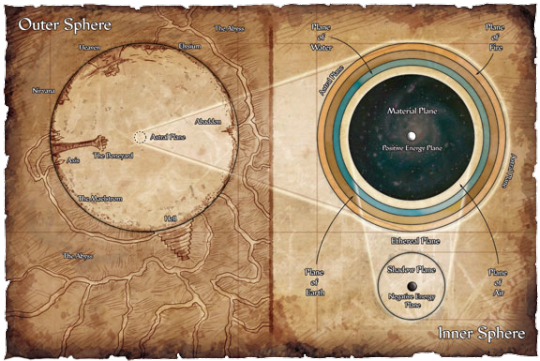
Let's go back even further, to the very first tabletop RPG book I bought (well... my parents bought after I nagged them). It was 3.5's Deities & Demigods. Not everyone's favourite, for sure, but I have a soft spot for it to this day. One of the neat things that Deities & Demigods did is that it included a lot of information about the Great Wheel, but it also included a lot of information about alternative cosmologies. In addition to featuring the core pantheon, which at the time was from Greyhawk, it featured the Norse pantheon, the Greek pantheon and the Kemetic (Egyptian) pantheon. For each of these, they provided a map and basic description of the cosmology that went with that pantheon. For the record, I adore maps. Looking at each of those three cosmology maps gave me tons of ideas for stories that I could tell.

One more digression, and that I'll have set everything up to get to my point. Aethera came out last week and knocked my socks off. The Aethera solar system has a unique cosmology in two regards. First, the entire solar system is cut off from the Outer Planes. Second, it possesses an extra Inner Plane, the Elemental Plane of Wood. Now, the Elemental Plane of Wood has shown up before, as an optional plane in the 3.5 Manual of the Planes. That got me thinking, why do there have to be only four elemental planes? Wouldn't Planescape benefit from being more flexible if it includes the Chinese Wu Xing elements? The Wu Xing, or Five Agents, are Wood, Fire, Earth, Metal, and Water for the record. Of course it would. If for no other reason than that it would be less culturally hegemonic. The four elements of the inner planes correspond with the four elements that Aristotle identified. Basing your entire knowledge around them is a distinctly Western point of view.
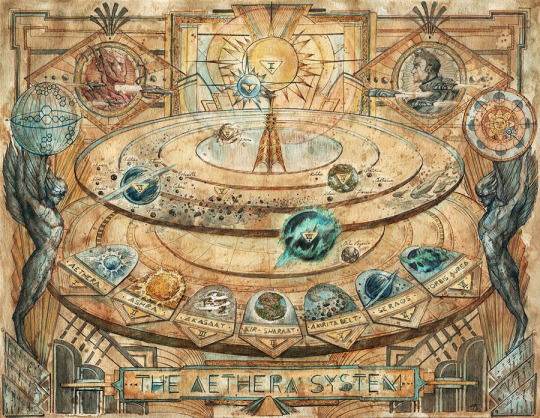
Perspective is the solution to all these problems. It is firmly established in Planescape that belief shapes reality. When we look at the Great Wheel cosmology, that description of the planes carries with it a particular bias. Specifically, that bias originates with the Great Modron March and likely comes down to use via the Fraternity of Order. The Great Wheel Cosmology roughly follows the path of the Modrons, with the Outlands acting as the central hub. Furthermore, this cosmology biases Sigil by placing the Spire at the centre of the Outlands. Now, we know this is intentional on the part of the writers since Sigil is an important location and because Sigilites place such an importance on their city, but remember the three rules of the planes. The Rule of Three. The Unity of Rings. The Centre of All. No matter where you are on the planes, you are at the centre of existence. Placing Sigil at the heart of the map is arbitrary, at least as arbitrary as placing Hopeless or Tir na Og at the centre would have been. Hells, you could put Dis at the core of a planar map, and it would be just as accurate (and don't think Dispater doesn't)!
So what's the point? We can deconstruct the rules and categories of planes and nothing about the Planescape setting will break. The Great Wheel has four Elemental Planes that are infinite yet bleed into each other to form a ring. Golarion has four Elemental Planes that are nested inside of each other with relatively discrete boundaries. Aethera has five Elemental Planes, featuring one that is unknown to the other settings. A prime setting that draws heavily on Chinese mythology and philosophy has a different set of five, four in common with Aethera, three with Golarion and the Great Wheel, and the Elemental Plane of Metal, which is unique to its cosmology. All of these settings can coexist in Planescape. Even if they appear to be contradictory, they aren't. The Clueless aren't clueless because they don't know anything, it's that mortals have such a hard time reconciling the complexities of the universe.
People like to categorize and stick things in cute little conceptual boxes. Every year, I have an hour long discussion with my students about how we say there are "ionic" bond and "covalent" bonds in chemistry, but in reality, those two categories aren't separate, they are a continuum. Chemical bonds will have a variety of properties, some ionic, some covalent, based off of the differences in electronegativities between atoms and the two specific chemicals involved with the bonds. It takes them time for this idea to sink into their brains. Planescape likes its boxes for planes as well. Inner, Outer, Transitive, and Prime. Anything that doesn't fit into those boxes either gets labelled as a demiplane (like the plane of dreams or time) or as a planer pathway (like Mount Olympus).
Is that fair though? How are these planes less of a plane than those four main categories. Going all the way back to my Deities & Demigods days, I think that there is a strong argument that Mount Olympus should be a proper plane of its own. Mount Olympus overlaps with parts of what the Fraternity of Order calls the Prime, Elysium, Arborea, The Grey Wastes, Carceri, but that part of the plane exists in none of those places. If you asked a Divination spell where you could find Zeus' Domain, it could give the answer of either Arborea or Olympus, depending on the diviner's point of view, and both would be true. It is important to note that this doesn't mean that Mount Olympus or the Great Beyond cosmology is "just" a subsection of the Great Wheel. Rather, all three cosmologies are accurate and correct, focusing on the aspects of the planes that are relevant to the worldview of the people who created those particular maps. Creating a 100% accurate and inclusive map of the planes is likely impossible. The multidimensional geometry of planar cosmology is too complicated. We can only look at it from certain points of view, and there is much to be gained by changing our perspective to look at the universe in a different way.
What is to be gained through this exercise? A big benefit to storytellers would be flexibility. This allows for many different types of worlds to be incorporated into a Planescape campaign, offering the diversity that is a hallmark of the setting. Creativity could be another benefit. New stories could easily spring forth simply by looking at an alternate configuration of the planes. Even if they don't, they could provide a unique personality for a particular NPC whose worldview is different from that of the PCs. Imagine an archon becoming convinced that the PCs are clueless rubes because they think there are four elemental planes, and how could you have air be an element when metal and wood aren't. That is memorable! The last benefit is sensitivity. Despite it being fuel for flame wars, I like to be able to include contemporary religions as an option in Planescape, but forcing them to conform to the Great Wheel strips intricacy and nuance away from the philosophies and metaphysics that act as the root for those religions. Metaphysical maps are often extremely important to the esoteric and mystical aspects of any given faith. If you do not allow the faith's cosmology to exist, you erase the richness of that culture. Furthermore, it appropriates culture, and there is a certain arrogance to disregarding a religion's internal cosmology and declaring that "this is the way it really is in my world!" It is humbler by far to have both metaphysical configurations be true simultaneously. Even if they appear to be mutually exclusive, you are dealing with the Planes. If you can't believe six impossible things before breakfast, you just aren't going to cut it.
24 notes
·
View notes
Text

Since making my Flora and Might comic for webtoon’s contest (please give it a read!) I haven’t had much creative juices for drawing besides doodles, I have been trying to work on my agents concept more though much of that will remain private (mostly to avoid spoilers)
But you may have a doodle of my rabbit boy Yue, as a treat , and also because he loves attention too
3 notes
·
View notes
Text
Operazione S.M.A.R.T. - Senza tregua (2017)
Operazione S.M.A.R.T. – Senza tregua (2017)
Link diretto a Openload Streaming e Download
S.M.A.R.T. Chase
Cina, 2017 Genere: Azione
Regia di Charles Martin
Con Orlando Bloom, Lei Wu, Simon Yam, Hannah Quinlivan, Lynn Hung, Jing Liang, Da Ying, Rong Chang, Xing Yu, Thomas Price
TRAMA DEL FILM:
Danny Stratton, esperto agente di sicurezza, deve scortare un prezioso dipinto di Van Gogh ma questo viene rubato. Di conseguenza, Danny viene…
View On WordPress
0 notes
Text
CHINE – La grande « leçon de choses » des arbres, par DD & DH
Billet invité.
L’arbre est un des grands et plus fondamentaux symboles communs à toutes les civilisations et cultures et on le retrouve dans pratiquement la totalité des récits d’origine de tous les grands mythes et cultes que l’humanité a élaborés. Nous sommes quelques uns, dans le cadre de ce blog, à espérer, sans naïveté excessive mais avec une petite dose de confiance, que la Chine peut ouvrir le chemin vers une préservation raisonnée de notre environnement commun sur cette planète et nous ne faisons guère ici que tenter de rassembler les éléments qui autorisent à nourrir cette petite lueur d’optimisme. La forte charge symbolique de l’arbre et l’amour/respect dont il est toujours l’objet de la part des Chinois d’aujourd’hui nous invitent à choisir d’annexer ce thème très riche à notre réflexion sur le « yang sheng » (« nourrir sa vie ») et à voir là une raison d’espérer que tout n’est pas perdu !
On se souvient que l’élan vital dont relève toute forme d’existence, y compris sous ses aspects les plus « inertes » comme les montagnes, les rochers et les pierres, ne peut se concevoir en Chine qu’en termes de processus autonome permanent, d’animation globale orchestrée selon des rythmes plus ou moins rapides et des transformations plus ou moins silencieuses à base d’alternances invariables (yin/yang, phases de la lune, saisons…). Menant la danse dans ce ballet cosmique des alternances (tel que le décrivent les 8 Trigrammes et, plus finement, les 64 Hexagrammes du Yi Jing), sont essentiellement à l’œuvre les 5 agents (wu xing) : bois, feu, terre, métal et eau. Bien évidemment l’arbre se rattache à l’agent « bois » et, par là, à l’est, à la couleur verte, à l’aube et au printemps. Il est donc fortement lié à l’idée de renouveau et de souffles vitaux réactivés. « L’idéogramme choisi pour nommer la phase « bois » désigne moins le matériau que ce qu’on pouvait appeler le « système arbre ». […] la graphie archaïque du mot « bois » représente le tronc avec au-dessus la ramure et en-dessous les racines. Or les racines des arbres sont généralement invisibles ; donc figurer quelque chose qui ne se voit pas, c’est représenter une idée. La particularité du système arbre tient au fait que, à la différence de la plupart des autres végétaux, les arbres poussent continuellement. Pendant la partie Yang de l’année (printemps et été), ils poussent vers le ciel, produisant branches, feuilles, fleurs et fruits ; pendant la partie Yin de l’année (automne et hiver), ils poussent vers la terre, à l’intérieur de laquelle ils enfoncent leurs racines. » (Cyrille Javary). Le flux de la sève orchestre le temps en s’inversant et c’est le moment de son retournement ascendant (non encore manifeste) qui a été choisi comme marqueur du début de l’année (la Fête du Printemps). L’arbre constitue donc une sorte de calendrier. C’est d’ailleurs l’image que les Chinois ont très tôt adoptée pour nommer les moments du temps (succession des années et des heures) en instaurant un comput qui met bord à bord deux séries de noms (d’idéogrammes), l’une dénaire (les 10 troncs célestes) et l’autre duodénaire (les 12 branches terrestres), le premier « tronc » revenant coïncider avec la première « branche » en arrivant au nombre 60 (60 ans constituant un « grand cycle », espérance de vie longtemps considérée comme très estimable).
Bien avant que soit mis en évidence et formulé chimiquement le phénomène de la photosynthèse, les Chinois ont attribué aux feuillages des arbres des pouvoirs régénérateurs en lien avec l’inspiration de souffles bénéfiques. Quant à leurs racines, on se doute qu’elles ont été, par analogie de fonction, parées de toutes sortes de vertus nourrissantes, fortifiantes et par là guérisseuses, donc très présentes dans la pharmacopée traditionnelle. S’enfonçant dans la terre pour s’en nourrir et s’élançant vers le ciel pour en capter la lumière dont il a besoin, l’arbre incarne le modèle parfait des échanges Ciel/Terre et de l’harmonieuse circulation des flux vitaux. Très sensibles au fait que les arbres, dans leur immense variété, apparaissent « programmés », en fonction de l’essence dont ils relèvent, dès le stade de graine, à se conformer à un certain type de développement (taille atteinte, diamètre du tronc, aspect de l’écorce et des feuilles, saison de floraison, vulnérabilité à telle variété de parasites …), les Chinois en ont, dès l’antiquité, déduit l’idée que chacun des « dix mille êtres » a sa propre nature et sa propre « voie » et que la conformité à cette nature/voie est la garante de l’harmonie de l’ensemble. Le très large éventail des essences, l’extraordinaire diversité de leurs « physionomies » que chacun peut constater au sein du « système arbre » ainsi que la variété des cadeaux naturellement et généreusement offerts ont amené les hommes à considérer les arbres comme des êtres vivants à part entière et, bien sûr, des partenaires et alliés privilégiés dans le cadre de leur existence quotidienne. Bois de chauffage, bois de construction, huile, résines, laque, nourriture du ver à soie, fruits de toute sorte et remèdes, l’utilité des arbres et la nécessité de les respecter et préserver en évitant leur gaspillage se sont imposées très tôt dans l’histoire chinoise. La reconnaissance pour tous ces présents s’est manifestée par une forme de culte dendrophile encore vivace aujourd’hui : nombreux sont les villages qui ont un « arbre sacré ». Etroitement associé au dieu du Sol, marquant un ancrage solide à un point d’attache identifié, l’arbre sacré n’est pas nécessairement le plus grand ou le plus beau mais souvent le plus vieux (il joue aussi le rôle d’ « arbre ancêtre » : il a été contemporain des ancêtres de tous les habitants). Il peut avoir été choisi pour l’extension de ses racines ou en fonction d’un antique verdict de « fengshui« , mais tous sont d’accord sur sa « vertu » (au sens chinois de « de« , l’efficacité) et en escomptent des bienfaits. En ville, les arbres sacrés sont plus discrets mais bel et bien présents : dans l’enceinte impériale à Pékin, dans les parcs et cours des temples de toute la Chine s’enracinent très augustement de très vieux arbres que tous les « changements de mandat » (y compris la Révolution Culturelle) ont épargnés, même quand les bâtiments ont été détruits. Certains, ceints de rubans rouges, sont de véritables équivalents-dieux. Il va de soi que la notion de « longue vie » joue un rôle de premier plan dans ce type de culte : d’une manière générale, même chez les espèces les plus ordinaires, l’arbre vit beaucoup plus vieux que l’homme qui l’a vu naître. L’idée de le prendre pour modèle et de s’en inspirer pour « nourrir sa vie » n’est donc jamais bien loin. Ainsi la conviction que l’arbre alimente la vitalité entraîne des comportements qui nous étonnent un peu : il est fréquent de voir dans des parcs des personnes (souvent assez âgées) tenir un tronc embrassé, se frotter le dos contre un arbre ou tendre les paumes ouvertes vers son influx régénérateur.
Mais ce ne sont pas pour autant les arbres les plus majestueux et colossaux qui ont la meilleure cote ! Séquoias, palissandres, santals et camphriers au format géant sont appréciés pour leur tour de taille quand il s’agit d’en faire des colonnes de temples et palais ou d’y sculpter des statues susceptibles de figurer au Guinness Book des records, mais au palmarès du prestige, tel pin de montagne tordu et souffreteux a toutes les chances de leur damer le pion haut la main��!
La beauté d’un arbre chinois obéit à des critères qui ne sont pas d’abord esthétiques. « Un arbre est beau non pas parce qu’il correspond à l’un ou l’autre critère humain d’une beauté définie par une école ou un groupe d’individus; il est beau parce qu’il reçoit suffisamment de ce qui nourrit sa nature d’arbre, qu’il pousse en utilisant toutes ses ressources selon la condition du terrain et des circonstances. Il peut présenter des formes différentes, sa beauté vient toujours de la conformité à l’organisation vitale sous-jacente à toute forme de vie. » (E. Rochat de la Vallée). En Chine où l’on est si volontiers matérialiste, l’utilité est certes prisée à sa juste valeur, mais, à partir des Tang (VIIIe s.), l’inutilité chère aux taoïstes l’emporte en matière de prestige. La poésie et la peinture donnent alors la pleine mesure de ce goût pour l’arbre inutilisable parce que tordu et perclus de bosses et de cicatrices : son adaptation obstinée à un environnement hostile et surtout son refus de se soumettre à un trivial usage purement utilitaire le placent au niveau des plus grands sages et déterminent sa place de choix dans le cœur des Chinois.
« Le sophora pousse dans un nid de cailloux
Et s’enracine orphelin au sol sombre et glacé. »
Ces deux vers liminaires d’un poème de Bao Zhao (416-466) illustrent ce penchant qui va bientôt culminer dans la peinture à l’encre et qui n’a, à ce jour, pas faibli. Depuis les Tang, la peinture classique chinoise, celle dite « de paysage » (qui se dit en réalité « montagne et eau », shan shui) fait une large place aux arbres. A été scrupuleusement cataloguée et codifiée au fil des siècles toute une série de poncifs (« patterns » dirait-on en anglais) mis à la disposition du peintre en fonction de ce que son ou ses arbres doivent communiquer au spectateur. On retrouve le répertoire et le mode d’emploi de ces poncifs dans le manuel de peinture dit du « Jardin en grain de moutarde » (vers 1689) que cite Claude Larre : « Arbres dénudés. Commencer par les plus petites branches ; disposition en V. Rendu des troncs : ordre des traits, le premier est celui de gauche, etc. Groupement des arbres : ils se regardent avec sentimentalité. Règle de l’hôte et de l’invité dans le regroupement. […] Avec indication pour les aiguilles de pin, du meilleur ordre pour disposer chaque aiguille dans une pelote de dix. Exemples de feuillages : en grains de poivre, en traces de rats, feuillages horizontaux, verticaux, interrompus. »
Des milliers de peintures (ni jamais tout à fait les mêmes, ni jamais tout à fait autres) recensent ainsi tous les arpèges du pinceau dans toutes les partitions possibles sur le thème de l’arbre : dans le poncif global « montagne et eau », l’arbre représente le niveau humain et le choix de son traitement au pinceau exprimera par conséquent de façon allusive les sentiments et états d’âme du peintre. C’est pourquoi des arbres peints sur la soie ou le papier en disent parfois long sur les difficultés d’une époque et les vicissitudes traversées par ceux qui maniaient le pinceau (faute peut-être de pouvoir s’exprimer autrement) dans des périodes troublées. Le plus révélateur dans ce sens est le motif assez fréquent de l’arbre qui pousse tant bien que mal à l’horizontale en pleine roche au flanc vertical et abrupt d’une falaise. Bravant les lois naturelles. Envers et contre tout !
Sans aller jusqu’à cette posture de défi, l’arbre qu’on vénère ne peut avoir d’utilité qu’à la marge : le catalpa fera à la rigueur un bois de cercueil de grand prestige ; le saule, supposé démonifuge, offrira ses rameaux printaniers au balayage des tombes à Qingming (Fête de Morts le 4 avril) ; une branche du prunier qui s’enhardit à fleurir sous les derniers frimas de l’hiver (l’arbre sous lequel serait né Laozi !) sera offerte au retraité à qui l’on souhaite une vieillesse alerte et robuste ; le pêcher, étroitement lié à l’immortalité, prêtera son bois et même les noyaux de ses fruits à la fabrication taoïste de toute une gamme d’amulettes et talismans de longue vie ; mais les plus révérés semblent devoir être pour toujours certains conifères. Non seulement les rigueurs hivernales et les conditions climatiques extrêmes ne semblent pas les affecter, mais ils apparaissent capables de se jouer de toutes les difficultés de terrains rocailleux et accidentés. Pins et cyprès acquièrent d’ailleurs avec le grand âge des troncs noueux, bosselés, tordus, secs et comme morts qui ne se distinguent plus guère de la pierre elle-même. La croyance populaire veut qu’il n’y ait pas de différence essentielle entre une roche et un arbre qui s’accommode de s’y enraciner : à la longue, dit-on, le bois du pin des montagnes se transforme, par « sympathie » naturelle et échanges de « qi« , en la même pierre que l’à-pic où il s’accroche de toutes ses racines. C’est du reste l’estime démesurée pour ces arbres/ermites des lieux escarpés (dont les plus remarquables exemplaires se trouvent dans les Huangshan, les Monts Jaunes) qui a incité les Chinois à lancer à la nature un type de défi lui aussi hors du commun : susciter, fabriquer, contrôler et diriger artificiellement la croissance d’un arbre de manière à ce qu’il puisse orner la table du lettré et offrir au regard, en réduction, toutes les caractéristiques qu’il aurait probablement pu avoir au bout de quelques siècles. Ces arbres nanifiés et vieillis par toute une gamme de tortures savantes nous sont connus par leur nom japonais de « bonzaï », mais la pratique est chinoise et remonte à l’époque des Song (Xe, XIe s.) d’un raffinement culturel parfois un peu décadent. Cette marotte pour les « penjing » ( « paysages en cuvette », nom chinois des « bonzaï ») n’est pas qu’une lubie de mandarins capricieux ou trop flemmards pour « se rendre en visite à la montagne », comme le dit la langue chinoise, elle est profondément imprégnée de la philosophie du « yang sheng« . La technique très sophistiquée qui est mise en œuvre se préoccupe en premier lieu du ralentissement de la sève et de l’allongement progressif, par des « plis de dragon » des vaisseaux qu’elle parcourt. Les mouvements de base de la gymnastique taoïste dans la quête d’immortalité ne sont pas autre chose, mutatis mutandis et en changeant d’échelle, que ces étirements et contorsions non naturelles du corps en vue de ralentir et contrôler toutes les formes de circulation interne, celles-là mêmes qu’on impose aux arbres qu’on rêve de rendre immortels sous la forme obtenue au terme de leur yoga forcé.
La Chine est relativement pauvre en arbres utiles. Ses principales forêts exploitables se trouvent dans les massifs montagneux du Grand Kinghan de l’ex-Mandchourie. L’actualité toute récente (5 mai 2017) fait état d’un nouvel incendie dans cette zone régulièrement ravagée par le feu. Le plus terrible de ces incendies à l’époque contemporaine a eu lieu en mai 1987, détruisant sans pouvoir être maîtrisé 70% de la forêt et faisant 200 morts et 50 millions de sans abri. Cette ressource est donc fragile et n’est actuellement pas entièrement reconstituée. Ailleurs, le patrimoine forestier ancien est très limité : en 1949, à l’avènement de la RPC, si l’on excepte les quelques arbres intouchables parce que sacrés que nous avons évoqués, la Chine est entièrement déboisée, la terre dans les zones habitées y est pelée et nue comme le dos de la main car les arbres que les guerres (sino-japonaise et civile) n’ont pas détruits en près de 20 ans ont été littéralement « dévorés » par une population affamée en quête de bois pour faire du feu et de feuilles, écorces et racines à mettre dans la marmite ! Voyez des photos de l’époque : elles montrent d’étonnants paysages quasi lunaires. Quant aux arbres replantés avec ardeur dans les années 50, un nombre non négligeable d’entre eux a, hélas, fourni du bois pour alimenter les hauts-fourneaux de poche du Grand Bond et contribué à produire un acier inutilisable !
Actuellement, pour ses besoins en bois utilitaire, nous le savons car nous sommes directement concernés, la Chine se tourne beaucoup vers l’importation et elle est, depuis quelques décennies, extrêmement demandeuse (et prête à payer cher et rubis sur l’ongle) d’une forte quantité, sous forme de grumes, de nos chênes français (dont une partie nous revient transformée en parquets stratifiés prêts à poser !). Non seulement la Chine veut désormais préserver sa propre forêt primaire, mais elle est confrontée à un problème très aigu de désertification. Le désert de Gobi gagne inexorablement du terrain et les tempêtes terribles qui s’y forment emportent chaque fois des millions de m3 de poussière vers Pékin, la Corée et le Japon. Ce sont ces colères du « Dragon jaune » renforcées par la pollution industrielle qui asphyxient toute la Chine du nord certains jours de printemps ! La Chine a entrepris de répondre à ce défi en entreprenant le chantier « écologique » les plus colossal au monde : édifier face au Gobi et à sa menace une « Grande Muraille Verte », soit une ceinture plantée de 4500 km du Xinjiang au Heilongjiang. Les travaux commencés en 1978 devraient s’achever vers 2070. Un siècle de lutte contre une nature hostile et, de surcroît, très malmenée par la marche forcée de la Chine vers le statut de grande puissance ! La chose n’est pas simple et le projet donne lieu en Chine même à de sérieuses controverses. On estime que la couverture forestière s’est accrue de 13 millions d’hectares depuis 2008, mais les tempêtes détruisent les jeunes arbres comme on abat des quilles, certaines essences succombent à des épidémies ou s’adaptent plus mal que prévu au sable et aux cailloux. Certains spécialistes doutent de l’efficacité d’une mono-plantation comme celle que l’on obtient par ensemencement aérien, d’autres sont sceptiques quant au problème de l’eau. Mais le chantier se poursuit activement coûte que coûte car le gouvernement chinois n’a pas le choix : disons qu’il tient à honorer ses engagements de la COP 21 à réduire drastiquement ses émissions de gaz à effet de serre, mais ajoutons que, s’il veut garder le pouvoir, il a le couteau sous la gorge et est obligé d’engranger des résultats probants dans ce domaine de l’écologie auquel la population est, à force de souffrir d’effets néfastes à sa santé et à celle de ses enfants, extrêmement sensible ! Cent milliards d’arbres devront à terme avoir boisé 250 000 km2, soit à peu près l’équivalent de 6 fois la Suisse. Le Serpent vert doit impérativement juguler le Dragon jaune … Question de survie. Pour nous tous !
Ouvrages cités
La souplesse du dragon. Les fondamentaux de la culture chinoise, par Cyril J-D Javary (Ed. Albin Michel 2014)
Esthétiques du quotidien en Chine (ouvrage collectif) : Chap. « L’harmonieuse beauté de la santé » Elisabeth Rochat de la Vallée. (Ed. du Regard 2016)
Les Chinois, par Claude Larre (Ed. Philippe Auzou-Lidis 1982)
from Blog de Paul Jorion http://ift.tt/2rRwOBa
via IFTTT
0 notes
Text
Feb 7 Saigon/Ho Chi Minh City
We’re off like a shot! “Onetrip” guides Ben and Binh meet us in the lobby at 8 am, fit us for helmets, and put us on the back of their motorbikes for a half-day “Student City Tour.” In conversation, everyone refers to HCMC as “Saigon”, HCMC is used in written correspondence.
Ben’s a 22 year old student studying Japanese and English, Binh’s 23 and studying English and law.

vimeo
Our first stop is the Reunification/Independence Palace, a groovy Sixties masterpiece. We arrive just in front of busloads of tourists, so our tour of the opulent reception halls, offices, living quarters, and bunker is largely unencumbered. I recall the famous photograph of the NVA tank smashing through the complex’s ornate wrought iron fence on April 30, 1975.


My favorite room is the Ambassadors Reception Chamber, furnished with beautiful Japanese-inspired lacquered furniture and a massive screen.
Next stop is Notre Dame Cathedral followed by a walk through the Central Post Office.
We spend an hour at the War Remnants Museum. It’s a ideal time to reflect on the costs of war, particularly for noncombatants. The Agent Orange exhibit is particularly disturbing, the photographs of victims are compelling.
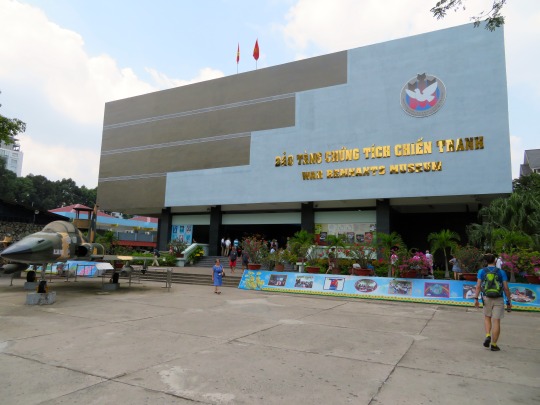
We scooter past the former American embassy--now a coffee shop--and the Saigon Opera House (Ho Chi Minh Municipal Theater).

After lunch at an incredibly busy Pho Hung, we strike out for a nail salon we’d spotted yesterday. For 150,000 dong/$7 (includes tip), Susan gets a first rate mani/pedi. Flip flops for the walk home are purchased for $4 at the local market.
We get back to the room, snooze, then meet Onetrip guides Ben and Khoi for our Evening Food Tour. Epic! We hit five spots by motorbike and by the time we return to Christina’s, we’re beyond full.


We eat beef prepared on a sidewalk grill and consume dim sum, sticky rice, and passion fruit smoothies along the bank of the Saigon River opposite the very modern District 1. The quiet is a very welcome break! Other stops feature Vietnamese pancakes and snails, Vietnamese “pizza”, and dessert served at one of the oldest sweet shops in Saigon.
Things I learn about Vietnamese food:
Traditional Vietnamese food is governed by the Asian principles of Wu Xing (the five elements) and Mahābhūta. It means that each dish is created to balance out the five fundamental taste senses and their corresponding organs:
Spicy - metal - gall bladder
Sour - wood - small intestine
Bitter - fire - large intestine
Salty - water - stomach
Sweet - earth - urinary tract
Vietnamese don’t cook many of these specialties. These dishes require so many ingredients and take so long to prepare that it’s easier and cheaper to buy it from one of the literally countless push carts and restaurants. Everyone is always eating and any patch of open sidewalk can serve as a restaurant!

The student crowd loves the pizza prepared and served along the sidewalk.
vimeo
0 notes
Text
0 notes
Text
I should really start posting more about my ocs/original ideas instead of fanart (maybe it’ll stop my brain from having Rayman brain rot) so uh, have some short plot descriptions
Untitiled magical girl isekai

Current progress, not much but currently the one I’m most likely to do something with
Stella Cross is an ordinary teenage girl who finds herself transported into another world full of mythical creatures and magic, Stella learns she is one of 7 chosen to awaken the world’s sleeping princess and unify this divided world.
Of cause, it’s easier said than done
Agents of Wu Xing

Current status (inactive) work in progress
Inspired by 2000s cartoons such as Xiaolin Showdown and Jackie Chan adventures, as well as the Adventure Bros, Agents of Wu Xing is an adult action comedy focusing on five young adults as they train to master one of five elements (Wood, fire, earth, metal and water) and hunt down mythical keys to ensure that Xiangliu is never free to unleash unspeakable evil upon the world. Of cause as all 20 somethings do, they get up into various hijinks, friendship dramas and debates on internet memes.
Also there’s a group of villains with a Chinese Zodiac theme, idk how else to add that.
I did a blog for it back in 2021 for a uni project you can find here and had a Google slides for it but I accidentally deleted it and I’m forever heartbroken over it ;-;
Little Pink Magical girl hood
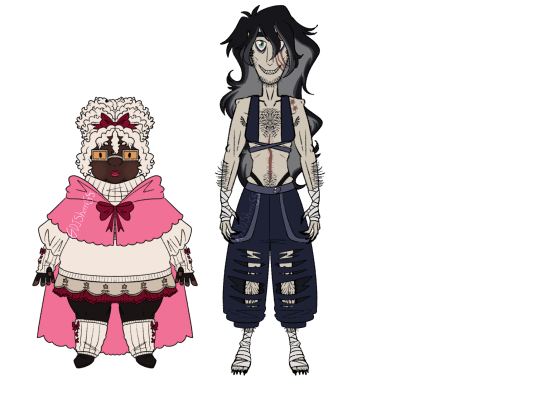
Current status, just an excuse to draw fairytale girls?
Little Red riding hood but she wears pink instead and the big bad wolf was actually just a socially awkward gremlin GF, also Pink has magic powers maybe?
Debating if there be a larger plot involving other fairy tales/folklore characters or just make each one a separate plot unrelated to Pink Hood, perhaps all set in the same world though?
Palette Witch

Current progress, 🤷♀️
Iris is the guardian witch of a small town called Inksmouth which is home to toons of various kinds, though her closet companions is Julius the cat, a street wise feline who smirks to hide his fears, and Fanny the rabbit, Mayor of the town who worries for everyone’s safety.
Inksmouth is surrounded by an ocean of darkness and the town folks has lived in darkness for so long they don’t remember what natural light looks like. The town is repeatedly under attack by disfigured monsters from the sea, which Iris must destroy with her paint brush in order to protect her home.
But when a glowing light falls from the skies, Iris’s perspective of both herself and the world begins to shatter
Frame by Frame /Toon mates

Current progress, just a concept
Cartoon and anime characters from various genres find themselves as apartment roommates due to the difficulty of paying rant on their own, but can they learn to live with each other’s differences or will tensions rise between them?
7 notes
·
View notes
Text





Some ocs I have had for a while now , though my newer followers probably have no clue on who these guys are so I updated their designs a bit. Feel free to ask stuff about them , as I got a blog for them but the information though is a bit outdated now
3 notes
·
View notes